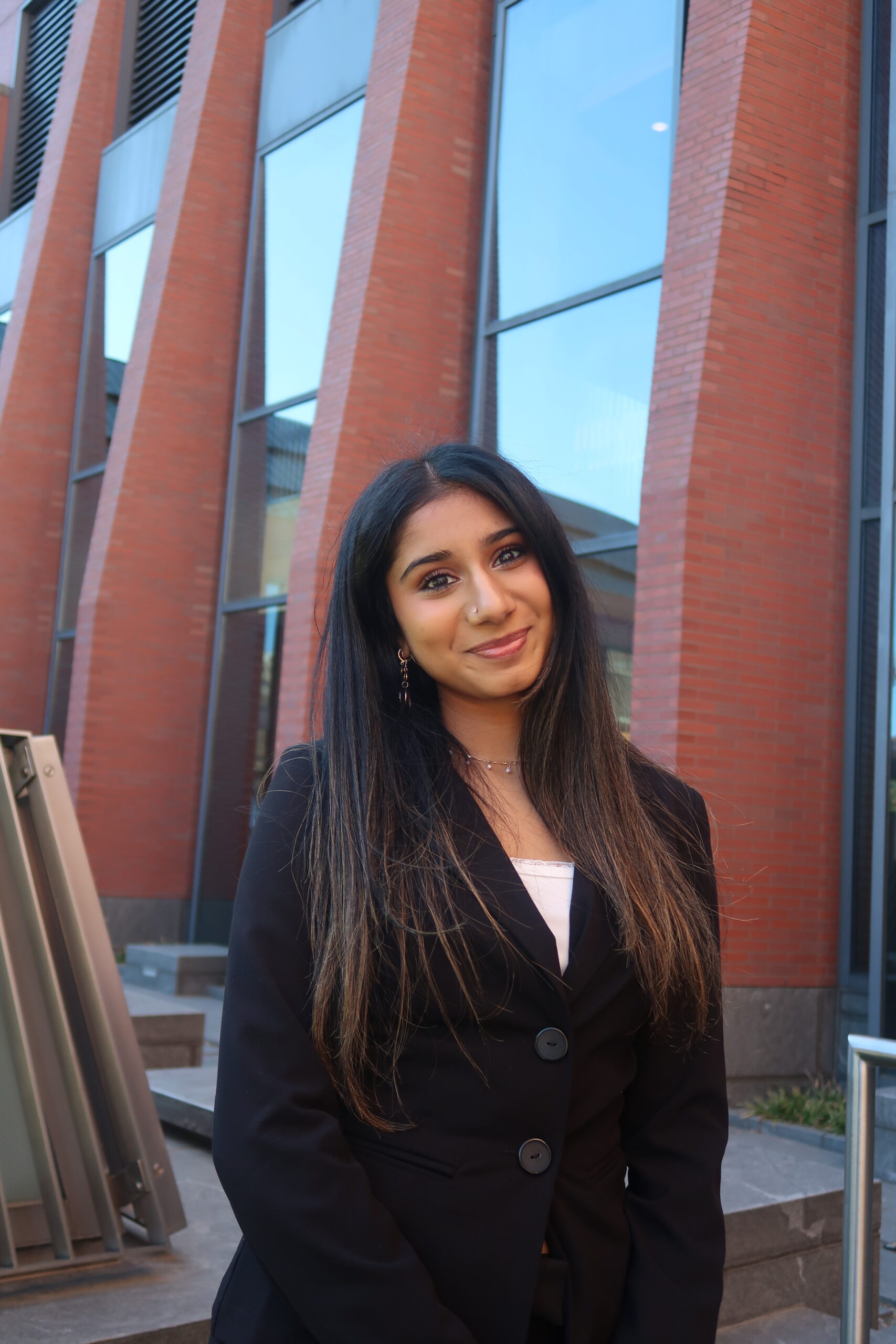 “She didn’t listen to a word I said.”
“She didn’t listen to a word I said.”
The veteran’s voice was flat. Tired, but not angry. While the words I read were in a clinical transcript, the echoes I heard were from my memories: in shelters, in clinics, in quiet conversations where people try to speak and still go unheard.
I used to think the hardest part of working in healthcare was finding the right diagnosis. But over time, I’ve realized it’s getting people to say what’s really wrong—and making sure someone listens when they do.
That realization began long before my research this summer, shaped by my experiences in clinics and through Care4Kiddos, the nonprofit I founded to support survivors of domestic abuse. Over time, my focus shifted from medical interventions to the deeper, often invisible forces that affect health—where systems fail, not bodies.
That’s what led me to my SIRE experience this summer, where I studied how communication breaks down between patients and providers in underserved healthcare settings like the U.S. Veterans Health Administration (VHA).
My project focused on identifying patterns in clinical dialogue—especially in environments where time constraints and systemic pressures make genuine conversation feel difficult. Using a behavioral codebook, I analyzed over 100 transcripts for signals like interruptions, jargon, missed cues, non-responsiveness, and empathy.
When a veteran would mention past trauma, the clinician would immediately change the subject. When a patient would pause—a perfect opening for connection—the silence would be filled with lab instructions or impersonal technical language. Even well-meaning providers defaulted to scripts or clinical detachment when real empathy was needed most.
And yet, I also saw moments that broke through. One veteran, reflecting on his journey from dependence to independence, was met not with a rushed checklist, but with calm recognition and encouragement from the provider. In another encounter, a clinician noticed the patient hadn’t been taught a basic part of their care—and instead of moving on, took a moment to gently walk them through it. These weren’t grand gestures. They were quiet, human choices. Moments of care that transformed routine appointments into something more—something that felt like being seen.
What made this research powerful was its structure—but what made it meaningful was its intimacy. Each transcript offered a window into someone’s life: their fears, their coping mechanisms, and what they needed from the person sitting across from them. Many patients came from backgrounds where being heard was already rare—older, disabled, low-income, or managing complex chronic conditions. If there’s anywhere listening should be sacred, it’s in the exam room.
This project reinforced something I’ve long believed but hadn’t fully articulated: communication is equity. In healthcare, the way we listen—or fail to—shapes diagnoses, outcomes, trust, and survival. I’m grateful to the SIRE program for the opportunity to examine healthcare inequality as a systemic issue—through both quantitative analysis and the lived realities behind the data.
This summer, I didn’t just study how people talk—I studied how people try to be heard.
Before this project, I thought of research as something done at a distance—measuring, categorizing, analyzing. But sitting with these transcripts taught me how deeply personal research can be. I learned how to balance objectivity with care, how to translate human experiences into data without losing their humanity, and how to ask better questions—of systems, of others, and of myself. Most of all, I walked away with a deeper sense of responsibility.
Listening isn’t passive. It’s a choice—and one that has the power to heal, or to harm.


